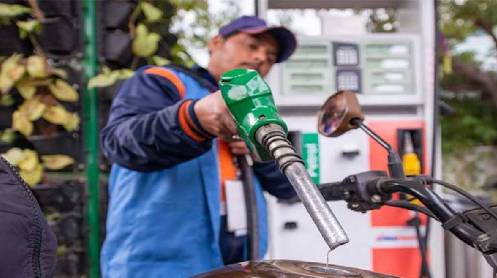ISLAMABAD: Briefing caretaker Prime Minister Anwaar-ul-Haq Kakar on Russian crude’s impact on POL prices, the Petroleum Division said that the maximum benefit of Russian crude is quite nominal of Re1 per liter petrol and diesel.
It added that importing Russian crude involved two risks, including 30-36 days of transportation and 60 percent production of furnace oil that has to be exported at the rate of 75 percent of crude with a 25 percent loss.
No company except Pakistan Refinery Limited (PRL) is ready to refine the Russian oil, and if PRL is obliged to keep refining Russian oil, only Rs1 relief can be passed on to consumers on per liter of petrol, and diesel price.
Prime Minister was also told that if PARCO and NRL jointly refine the Russian oil, the benefit could go up to Rs3 per liter again depending upon the volume of the Russian crude. As PARCO, being comparatively the latest refinery and better plants will help increase the yields of Russian crude and reduce the production of furnace oil to some extent. However, PARCO, and NRL have refused to refine Russian oil.
Russia has also squeezed the discount to $5 per barrel at Platt price against $15-$20 per barrel, the PM was briefed.
Brent price stands at $87 per barrel and against it, Russian crude has an existing price of $73 per barrel. The cost of Russian oil has crossed the cap price of $60 per barrel imposed by G7 countries and the import of Russian oil above the cap price will trigger problems on payments issue.
The decades-old Pakistan Refinery Limited (PRL) refined the heavy Russian crude —URAL in almost three months by blending it with crude from the Middle East and local crude. The refinery adopted the strategy of refining by blending 45 percent URAL, 45 percent crude from the Middle East, and 10 percent local crude.
PRL is too old as it was incorporated in Pakistan as a Public Limited Company in May 1960. PRL is a hydro-skimming refinery designed to process various imported and local crude oil to meet the strategic and domestic fuel requirements of the country. The refinery has a capacity of processing approximately 50,000 barrels per day of crude oil into a variety of distilled petroleum products such as motor gasoline, high speed diesel, furnace oil, jet fuels, kerosene oil, and naphtha. Out of 100,000 URAL, PRL has produced 10 percent Mogas (petrol) and 60 percent furnace oil and 10-15 percent high-speed diesel, and the remaining 15 percent other items. The official said that the furnace oil out of URAL has been produced 50 percent with high viscosity at 700cSt and PRL has to mix 10 percent diesel in it to decrease its viscosity at 180 cSt so that it could flow. This is how the furnace oil production at 180 cSt escalates to 60 percent and diesel production is reduced by 10 percent. The net diesel production stand at 10-15 percent out of URAL. This means that out of 100,000 tonnes of URAL crude, the decades-old PRL has to export 60 percent URAL crude in the shape of furnace oil at 75 percent of crude with a 25 percent loss.







